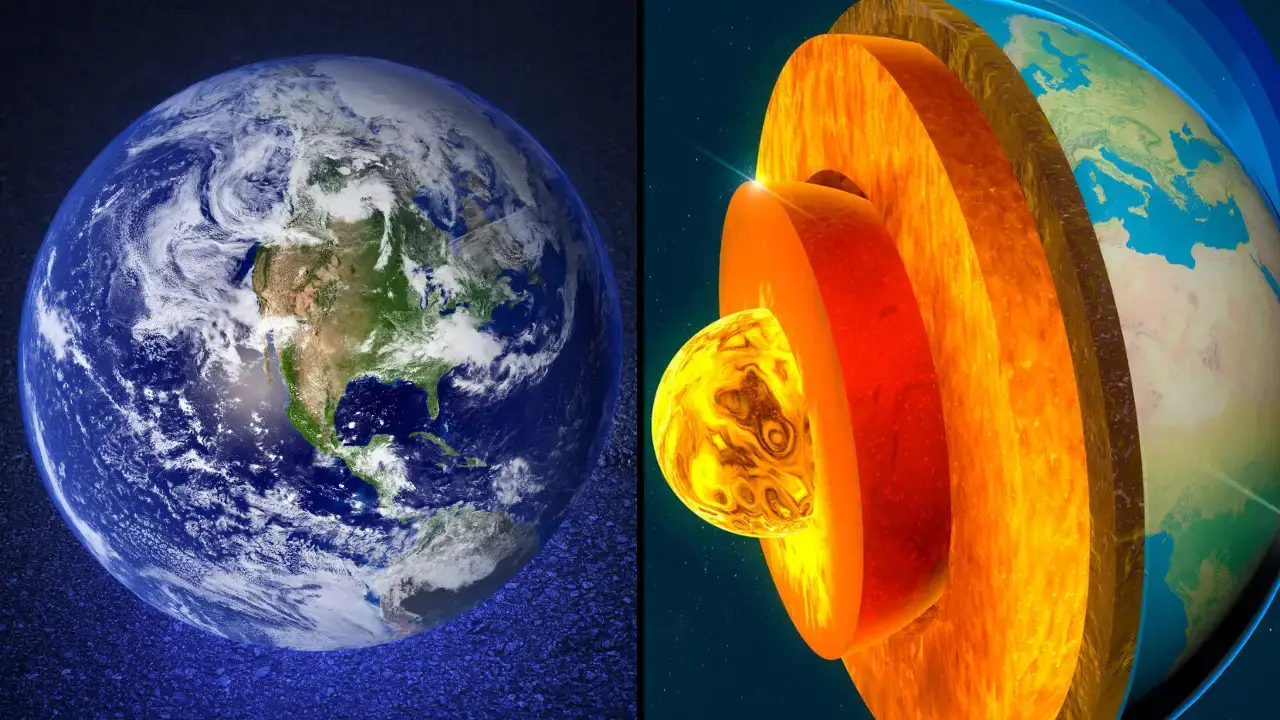
Credit: Alamy
Earth’s Core Has Stopped Spinning And Could Now Be Going In Reverse, Study Says
A study says that the Earth’s core has stopped spinning and could now be going in reverse.
The Earth is formed of four layers – the crust, the mantle and the inner and outer cores.
The solid inner core is about 3,200 miles below the Earth’s crust and is separated by the liquid outer core, which allows the inner core to rotate at a different speed from the rotation of the planet itself.
However, a recent study has shown that there has been a disruption to the Earth’s core.
Check out this breakdown of what is happening to the Earth’s core below…
Yi Yang, an associate research scientist at Peking University, and Xiaodong Song, Peking University chair professor, have been studying the seismic waves from earthquakes that have passed through the Earth’s inner core along similar paths since the 1960s.
This study was taken as a method to measure how fast the inner core is.
They were surprised by their findings though as since 2009, seismic records, which tended to change over time, have shown little difference.
Related Article: Asteroid To Hit Earth’s Atmosphere In A Few Hours
Related Article: ‘Time Traveller’ Claims Huge Meteor Will ‘Bring Aliens To Earth’ In Next Few Months
This has led them to believe that the inner core rotation had paused.
In their published research journal on Nature Geoscience, they write: “We show surprising observations that indicate the inner core has nearly ceased its rotation in the recent decade and may be experiencing a turning-back.
“When you look at the decade between 1980 and 1990 you see clear change but when you see 2010 to 2020 you don’t see much change.”
Song and Yang also argue that, based on their calculations and research, a small imbalance in the electromagnetic and gravitational forces could slow and even reverse the inner core’s rotation.

Other experts in the field have also added their knowledge to the findings, with Hrvoje Tkalcic, a geophysicist at the Australian National University, believing that the Earth’s core is now more ‘in sync’ with the rest of the planet.
He adds: “The inner core doesn’t come to a full stop.
“[This] means that the inner core is now more in sync with the rest of the planet than a decade ago when it was spinning a bit faster.
“Nothing cataclysmic is happening.”
While this progress into getting a clearer picture regarding the Earth’s inner core, both Song and Yang agree that more research is needed.
Earth’s core has a radius of almost 2,200 miles and is about the size of Mars.
It consists mostly of iron and nickel and is about one-third of Earth’s mass.
In his book ‘The Earth’s Inner Core: Revealed by Observational Seismology’, Tkalcic further explains why it has been so difficult to gain information about the centre of our planet.
Related Article: NASA Confirms Mission To Explore Asteroid That Could Make Everyone On Earth A Billionaire
Related Article: ‘Time Traveller’ Claims Aliens Will Take Over The Earth In 2023
He writes: “The objects of our studies are buried thousands of kilometres beneath our feet.
“We use geophysical inference methods to infer the Earth’s internal properties, and caution must be exercised until multi-disciplinary findings confirm our hypotheses and conceptual frameworks.
“You can think of seismologists like medical doctors who study the internal organs of patients’ bodies using imperfect or limited equipment.
“So, despite progress, our image of the inner Earth is still blurry, and we are still in the discovery stage.”
Watch our Video of the Day below…